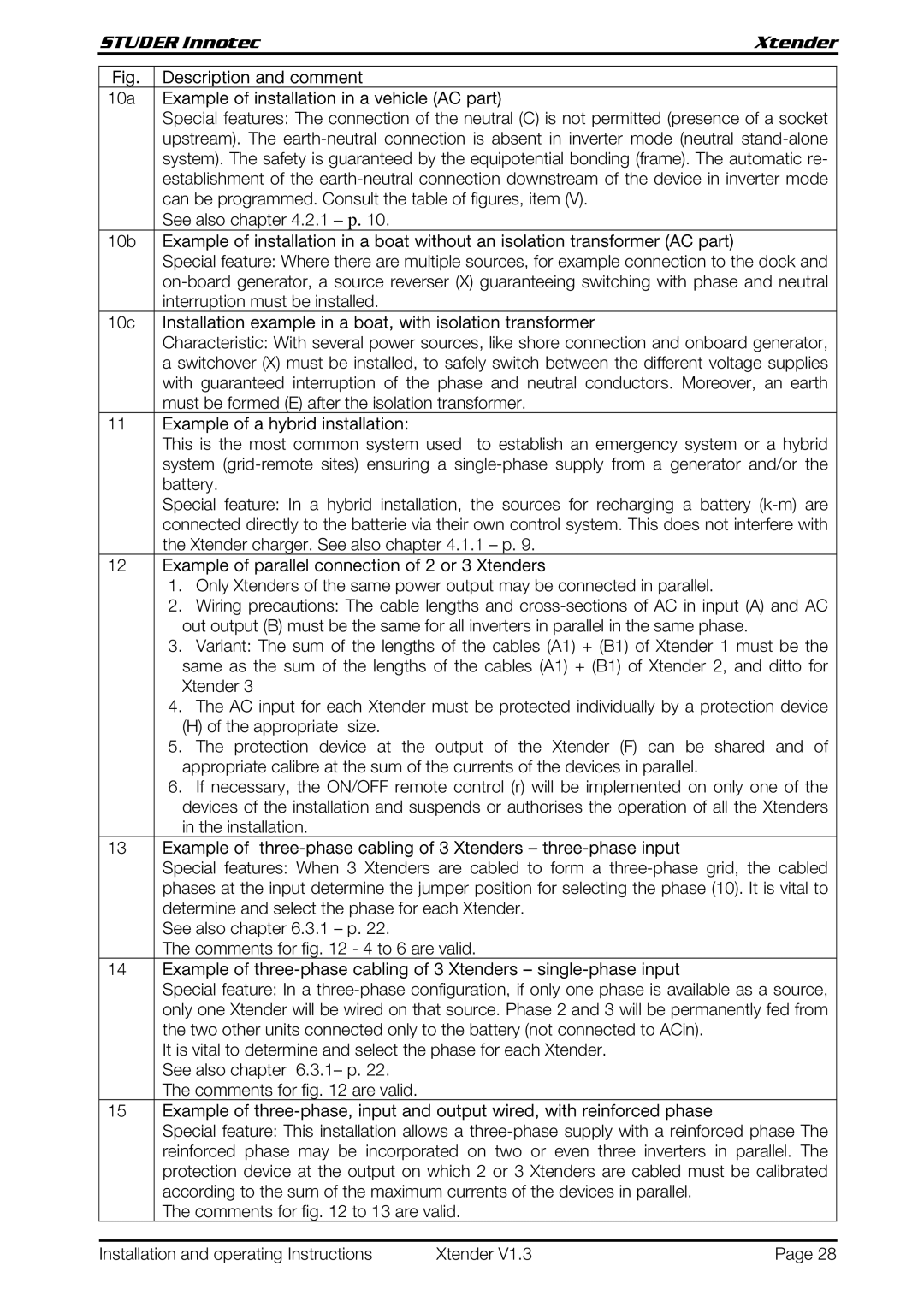
| STUDER Innotec | Xtender | ||
|
|
|
|
|
| Fig. | Description and comment |
|
|
| 10a | Example of installation in a vehicle (AC part) |
|
|
|
| Special features: The connection of the neutral (C) is not permitted (presence of a socket | ||
|
| upstream). The | ||
|
| system). The safety is guaranteed by the equipotential bonding (frame). The automatic re- | ||
|
| establishment of the | ||
|
| can be programmed. Consult the table of figures, item (V). |
|
|
|
| See also chapter 4.2.1 – p. 10. |
|
|
| 10b | Example of installation in a boat without an isolation transformer (AC part) |
|
|
|
| Special feature: Where there are multiple sources, for example connection to the dock and | ||
|
| |||
|
| interruption must be installed. |
|
|
| 10c | Installation example in a boat, with isolation transformer |
|
|
|
| Characteristic: With several power sources, like shore connection and onboard generator, | ||
|
| a switchover (X) must be installed, to safely switch between the different voltage supplies | ||
|
| with guaranteed interruption of the phase and neutral conductors. Moreover, an earth | ||
|
| must be formed (E) after the isolation transformer. |
|
|
11Example of a hybrid installation:
This is the most common system used to establish an emergency system or a hybrid system
Special feature: In a hybrid installation, the sources for recharging a battery
12Example of parallel connection of 2 or 3 Xtenders
1.Only Xtenders of the same power output may be connected in parallel.
2.Wiring precautions: The cable lengths and
3.Variant: The sum of the lengths of the cables (A1) + (B1) of Xtender 1 must be the same as the sum of the lengths of the cables (A1) + (B1) of Xtender 2, and ditto for Xtender 3
4.The AC input for each Xtender must be protected individually by a protection device
(H) of the appropriate size.
5.The protection device at the output of the Xtender (F) can be shared and of appropriate calibre at the sum of the currents of the devices in parallel.
6.If necessary, the ON/OFF remote control (r) will be implemented on only one of the devices of the installation and suspends or authorises the operation of all the Xtenders in the installation.
13Example of
Special features: When 3 Xtenders are cabled to form a
See also chapter 6.3.1 – p. 22.
The comments for fig. 12 - 4 to 6 are valid.
14Example of
Special feature: In a
It is vital to determine and select the phase for each Xtender. See also chapter 6.3.1– p. 22.
The comments for fig. 12 are valid.
15Example of
Special feature: This installation allows a
The comments for fig. 12 to 13 are valid.
Installation and operating Instructions | Xtender V1.3 | Page 28 |
